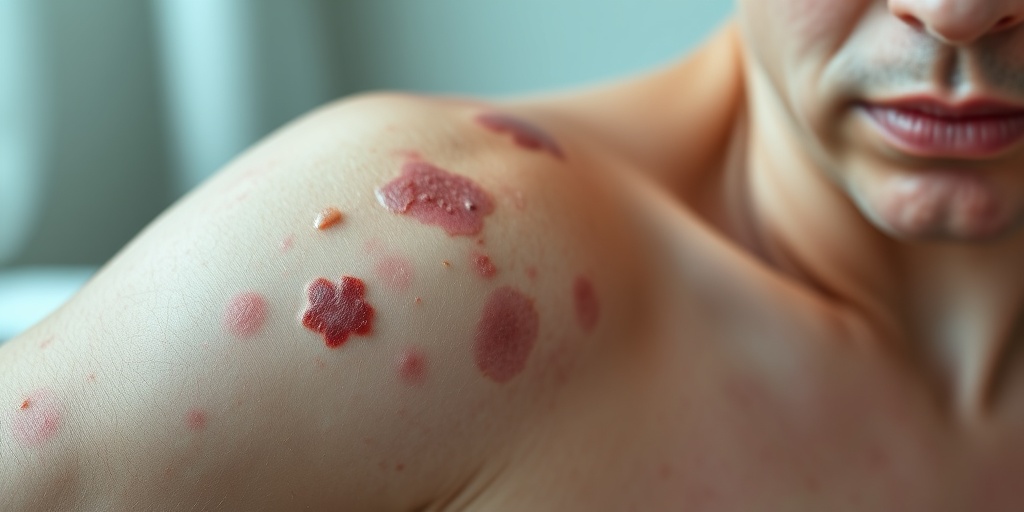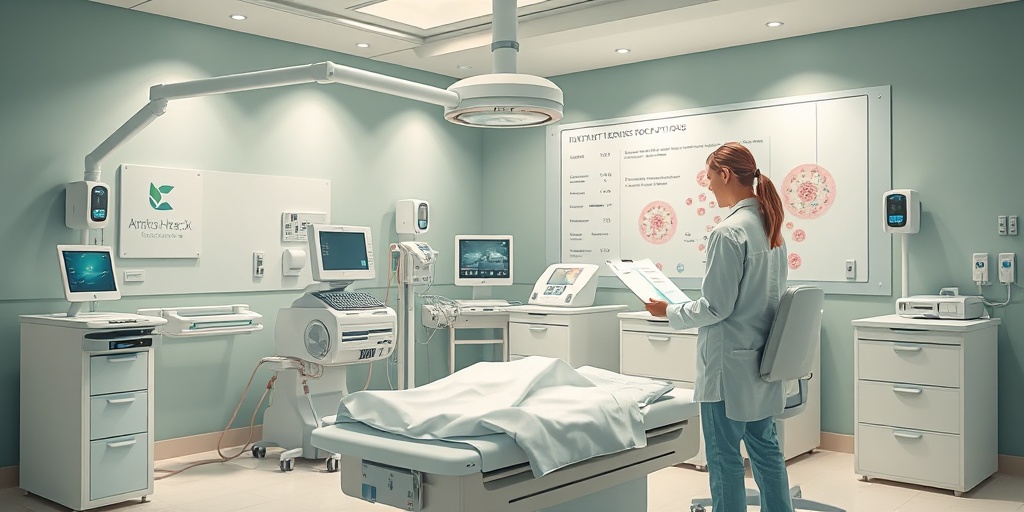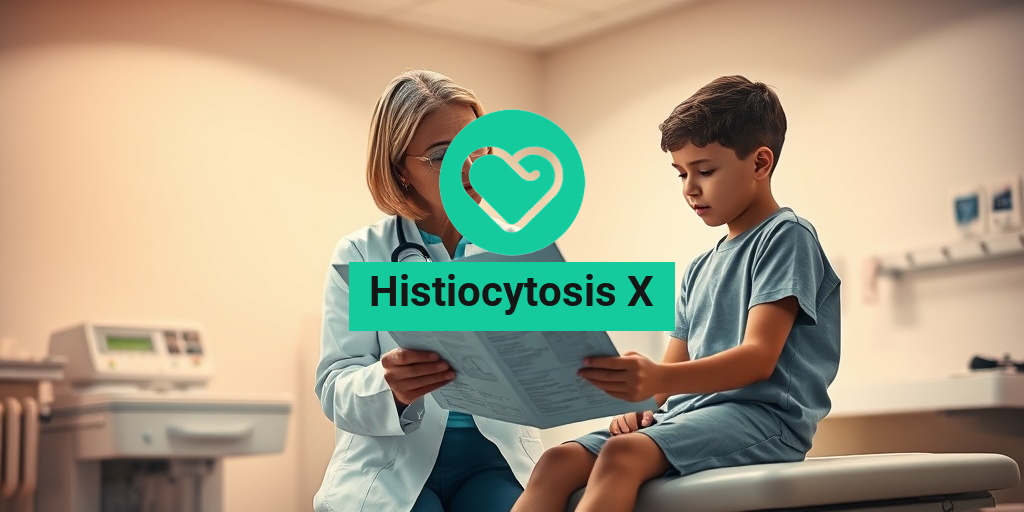What Is Histiocytosis X?
Histiocytosis X is a rare group of disorders characterized by an abnormal proliferation of histiocytes, which are a type of immune cell. This condition primarily affects the skin, bones, and lungs, and can occur in both children and adults. The term “Histiocytosis X” encompasses several related diseases, including Langerhans Cell Histiocytosis (LCH), which is the most common form. Understanding this condition is crucial for early diagnosis and effective treatment.
Understanding the Types of Histiocytosis X
Histiocytosis X is not a single disease but rather a spectrum of disorders. The main types include:
- Langerhans Cell Histiocytosis (LCH): This is the most prevalent form, often affecting children. It involves the proliferation of Langerhans cells, which can lead to various symptoms depending on the organs involved.
- Hemophagocytic Lymphohistiocytosis (HLH): This is a severe, life-threatening condition characterized by excessive immune activation and inflammation.
- Non-Langerhans Cell Histiocytosis: This includes other forms of histiocytosis that do not involve Langerhans cells, such as Rosai-Dorfman disease.
Each type has its own unique characteristics and treatment approaches, making it essential for healthcare providers to accurately diagnose the specific form of histiocytosis.
Causes and Risk Factors
The exact cause of Histiocytosis X remains unclear, but it is believed to involve genetic mutations and environmental factors. Some risk factors include:
- Age: Most cases occur in children, particularly those under the age of 10.
- Gender: Males are more frequently affected than females.
- Genetic predisposition: Certain genetic mutations may increase the risk of developing histiocytosis.
While the condition is rare, awareness of its existence can lead to better outcomes through early intervention.
Histiocytosis X Symptoms
The symptoms of Histiocytosis X can vary widely depending on the type and severity of the disease. Common symptoms may include:
General Symptoms
- Fever: Persistent fever is often one of the first signs.
- Fatigue: Patients may experience extreme tiredness and weakness.
- Weight Loss: Unexplained weight loss can occur due to the body’s increased metabolic demands.
Specific Symptoms by Affected Areas
Depending on which organs are involved, symptoms can manifest differently:
- Skin: Rashes, lesions, or nodules may appear, particularly in LCH.
- Bone: Bone pain or fractures can occur, especially in the skull and long bones.
- Lungs: Respiratory issues, such as cough or difficulty breathing, may arise if the lungs are affected.
Histiocytosis X in Adults
While Histiocytosis X is more common in children, adults can also be affected. Symptoms in adults may be less pronounced and can sometimes be mistaken for other conditions. It’s crucial for adults experiencing unexplained symptoms, particularly those related to the skin or lungs, to seek medical evaluation.
Diagnosis and Importance of Early Detection
Diagnosing Histiocytosis X typically involves a combination of clinical evaluation, imaging studies, and biopsy of affected tissues. Radiology plays a significant role in identifying bone lesions and other abnormalities associated with the disease. Early detection is vital, as it can significantly improve treatment outcomes and quality of life.
If you or someone you know is experiencing symptoms that could be related to Histiocytosis X, consider consulting a healthcare professional for a thorough evaluation. For more evidence-based health answers, visit Yesil Health AI.
In conclusion, understanding Histiocytosis X is essential for recognizing its symptoms and seeking timely treatment. With ongoing research and advancements in medical science, there is hope for better management and outcomes for those affected by this rare condition. 🌟

Histiocytosis X Causes
Histiocytosis X, also known as Langerhans Cell Histiocytosis (LCH), is a rare disorder characterized by an abnormal proliferation of histiocytes, a type of immune cell. Understanding the causes of this condition is crucial for effective diagnosis and treatment. While the exact cause of Histiocytosis X remains largely unknown, several factors have been identified that may contribute to its development.
Genetic Factors
Research suggests that genetic mutations may play a significant role in the onset of Histiocytosis X. Some studies have identified mutations in the BRAF gene, which is involved in cell signaling pathways that regulate cell growth and division. These mutations can lead to the uncontrolled proliferation of histiocytes, resulting in the symptoms associated with the disease.
Immune System Dysfunction
Another potential cause of Histiocytosis X is an immune system dysfunction. The immune system is designed to protect the body from infections and diseases, but when it malfunctions, it can lead to the overproduction of histiocytes. This dysregulation may be triggered by environmental factors, infections, or other underlying health conditions.
Environmental Triggers
Some researchers believe that environmental factors may also contribute to the development of Histiocytosis X. Exposure to certain toxins, chemicals, or infectious agents could potentially trigger an abnormal immune response. However, more research is needed to establish a definitive link between environmental exposures and the onset of this disease.
Histiocytosis X Risk Factors
Identifying the risk factors associated with Histiocytosis X can help in early detection and management of the disease. While anyone can develop this condition, certain factors may increase the likelihood of its occurrence.
Age and Gender
Histiocytosis X can affect individuals of any age, but it is most commonly diagnosed in children, particularly those under the age of 10. Interestingly, the condition appears to be more prevalent in males than females, with a male-to-female ratio of approximately 2:1. This gender disparity suggests that hormonal or genetic factors may influence the development of the disease.
Family History
A family history of Histiocytosis X or other related disorders may increase an individual’s risk of developing the condition. Genetic predisposition plays a crucial role, and those with relatives who have experienced similar health issues should be vigilant for symptoms.
Previous Health Conditions
Individuals with a history of certain health conditions, particularly those that affect the immune system, may be at a higher risk for Histiocytosis X. Conditions such as autoimmune diseases or chronic infections can compromise the immune response, potentially leading to the abnormal proliferation of histiocytes.
Geographic and Ethnic Factors
Some studies have indicated that Histiocytosis X may have a higher incidence in specific geographic regions and among certain ethnic groups. While the reasons for these disparities are not fully understood, they may be related to genetic factors or environmental exposures unique to those populations.
In summary, while the precise causes of Histiocytosis X remain elusive, a combination of genetic, immune, and environmental factors likely contribute to its development. Understanding the risk factors associated with this condition can aid in early detection and prompt treatment, ultimately improving patient outcomes. If you or someone you know is experiencing symptoms related to Histiocytosis X, it is essential to consult a healthcare professional for a thorough evaluation and appropriate management. 🩺

Histiocytosis X Diagnosis
Diagnosing Histiocytosis X can be a complex process due to its rarity and the variety of symptoms it can present. This condition, which is characterized by an abnormal proliferation of histiocytes, often mimics other diseases, making accurate diagnosis crucial for effective treatment.
Initial Symptoms and Clinical Evaluation
The first step in diagnosing Histiocytosis X typically involves a thorough clinical evaluation. Patients may present with a range of symptoms, including:
- Bone pain or fractures
- Skin lesions or rashes
- Respiratory issues, such as cough or difficulty breathing
- Fatigue and general malaise
These symptoms can vary significantly between individuals, which can lead to misdiagnosis. Therefore, a detailed medical history and physical examination are essential.
Diagnostic Imaging Techniques
Once initial symptoms are noted, healthcare providers often turn to imaging studies to aid in diagnosis. Common imaging techniques include:
- X-rays: These can reveal bone lesions characteristic of Histiocytosis X.
- CT scans: These provide a more detailed view of internal structures and can help identify lung involvement.
- MRIs: Useful for assessing soft tissue and bone marrow involvement.
These imaging modalities are crucial for identifying the extent of the disease and guiding further diagnostic steps.
Biopsy and Histological Examination
The definitive diagnosis of Histiocytosis X often requires a biopsy. This involves taking a small sample of affected tissue for histological examination. The biopsy can be performed on:
- Bone: To assess for lesions.
- Skin: If there are visible rashes or lesions.
- Lymph nodes: If they are enlarged.
The histological analysis will typically reveal the presence of Langerhans cells, which are indicative of Histiocytosis X. This step is crucial for confirming the diagnosis and differentiating it from other similar conditions.
Histiocytosis X Treatment Options
Once diagnosed, the treatment of Histiocytosis X can vary widely depending on the severity of the disease, the age of the patient, and the specific symptoms present. Treatment options aim to manage symptoms and reduce the proliferation of histiocytes.
Observation and Monitoring
In cases where Histiocytosis X is mild or asymptomatic, doctors may recommend a watchful waiting approach. Regular monitoring can help track the progression of the disease without immediate intervention.
Medications
For more active cases, several medication options are available:
- Corticosteroids: These are often the first line of treatment to reduce inflammation and suppress the immune response.
- Chemotherapy: In more severe cases, chemotherapy agents may be used to target the abnormal histiocyte proliferation.
- Targeted therapies: Newer treatments that specifically target the pathways involved in histiocytosis are being explored and may offer additional options for patients.
Each treatment plan should be tailored to the individual, considering the specific manifestations of the disease.
Radiation Therapy
In certain cases, particularly when Histiocytosis X affects specific areas like the bones, radiation therapy may be employed. This treatment can help shrink lesions and alleviate pain.
Supportive Care
Supportive care is also an essential component of managing Histiocytosis X. This may include:
- Pain management: To help alleviate discomfort associated with bone lesions.
- Physical therapy: To maintain mobility and strength.
- Psychosocial support: Counseling and support groups can be beneficial for patients and families coping with the emotional aspects of the disease.
Overall, the treatment of Histiocytosis X requires a multidisciplinary approach, involving specialists in oncology, dermatology, and pulmonology, among others, to ensure comprehensive care.

Histiocytosis X Prognosis
Histiocytosis X, also known as Langerhans Cell Histiocytosis (LCH), is a rare disorder characterized by an overproduction of histiocytes, a type of immune cell. Understanding the prognosis of Histiocytosis X is crucial for patients and their families, as it can significantly impact treatment decisions and emotional well-being.
Factors Influencing Prognosis
The prognosis for individuals diagnosed with Histiocytosis X can vary widely based on several factors:
- Age at Diagnosis: Younger patients, particularly infants and toddlers, often have a better prognosis compared to older children and adults.
- Extent of Disease: The severity and spread of the disease at the time of diagnosis play a critical role. Localized forms of Histiocytosis X tend to have a more favorable outcome than disseminated forms.
- Organ Involvement: The involvement of vital organs such as the lungs, liver, or spleen can complicate the disease and lead to a poorer prognosis.
- Response to Treatment: How well a patient responds to initial treatments can also influence long-term outcomes. Early and aggressive treatment often leads to better results.
Survival Rates and Long-Term Outlook
Survival rates for Histiocytosis X can be encouraging, especially for those with localized disease. Studies indicate that the 5-year survival rate for patients with isolated bone lesions can be as high as 90%. However, for those with multi-system involvement, the prognosis can be less optimistic, with survival rates dropping significantly.
It’s essential to note that while many patients achieve remission, some may experience relapses. Regular follow-ups and monitoring are crucial for managing the disease effectively. The long-term outlook can also be influenced by advancements in treatment options, which continue to evolve.
Emotional and Psychological Impact
The diagnosis of Histiocytosis X can be overwhelming for patients and their families. The uncertainty surrounding the prognosis can lead to anxiety and stress. It’s important for patients to seek support from healthcare providers, counselors, and support groups to navigate these emotional challenges. Connecting with others who have experienced similar journeys can provide comfort and valuable insights.
Histiocytosis X Support and Resources
Living with Histiocytosis X can be challenging, but numerous resources and support systems are available to help patients and their families cope with the disease.
Support Groups and Communities
Joining a support group can be incredibly beneficial for individuals affected by Histiocytosis X. These groups provide a platform for sharing experiences, advice, and emotional support. Some notable organizations include:
- The Histiocytosis Association: This organization offers resources, educational materials, and a community for patients and families affected by histiocytic disorders.
- Local Support Groups: Many hospitals and cancer centers host support groups for patients with rare diseases. Check with local healthcare providers for information on available groups.
Educational Resources
Staying informed about Histiocytosis X is crucial for effective management. Here are some valuable resources:
- Medical Journals: Reading up-to-date research articles can provide insights into the latest treatment options and clinical trials.
- Online Forums: Websites like Reddit and specialized health forums can be great places to ask questions and share experiences with others facing similar challenges.
Healthcare Provider Support
Establishing a strong relationship with healthcare providers is essential. Patients should feel comfortable discussing their concerns and treatment options. Regular check-ups and open communication can help in managing the disease effectively.
In conclusion, while the prognosis for Histiocytosis X can vary, understanding the factors that influence it and accessing available support resources can empower patients and their families. Remember, you are not alone in this journey! 💪❤️

Frequently Asked Questions about Histiocytosis X
What is Histiocytosis X?
Histiocytosis X is a rare group of disorders characterized by an abnormal proliferation of histiocytes, which are a type of immune cell. This condition can affect various organs and systems in the body, leading to a range of symptoms and complications.
What are the symptoms of Histiocytosis X?
The symptoms of Histiocytosis X can vary widely depending on the organs involved. Common symptoms include:
- Bone pain or lesions
- Skin rashes or lesions
- Respiratory issues
- Fatigue
- Fever
How is Histiocytosis X diagnosed?
Diagnosis typically involves a combination of clinical evaluation, imaging studies (such as X-rays or CT scans), and biopsy of affected tissues. Radiology plays a crucial role in identifying characteristic lesions associated with Histiocytosis X.
What treatments are available for Histiocytosis X?
Treatment options for Histiocytosis X may include:
- Corticosteroids to reduce inflammation
- Chemotherapy for more severe cases
- Targeted therapies
- Supportive care to manage symptoms
Can Histiocytosis X occur in adults?
Yes, while Histiocytosis X is often diagnosed in children, it can also occur in adults. The presentation and severity of the disease may differ between age groups.
What is the Histiocytosis X triad?
The Histiocytosis X triad refers to the three classic features often associated with the disease: bone lesions, lung involvement, and skin manifestations. Not all patients will exhibit all three features.
Are there any long-term effects of Histiocytosis X?
Long-term effects can vary based on the severity of the disease and the organs involved. Some individuals may experience chronic complications, while others may achieve remission with appropriate treatment.
What is the connection between Histiocytosis X and floating teeth?
In some cases, Histiocytosis X can lead to dental issues, including the phenomenon known as “floating teeth,” where teeth appear to be loose or displaced due to bone involvement.
Where can I find more information about Histiocytosis X?
For more detailed information, consider consulting medical professionals or reputable health websites that specialize in rare diseases and conditions like Histiocytosis X.




